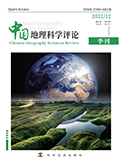参考文献
[1] 杨婷婷, 阮文奇, 张舒宁. 旅游需求对跨境危机事件信息扩散的空间响应与影响因素[J]. 旅游学刊, 2022, 37(08): 119-132.

